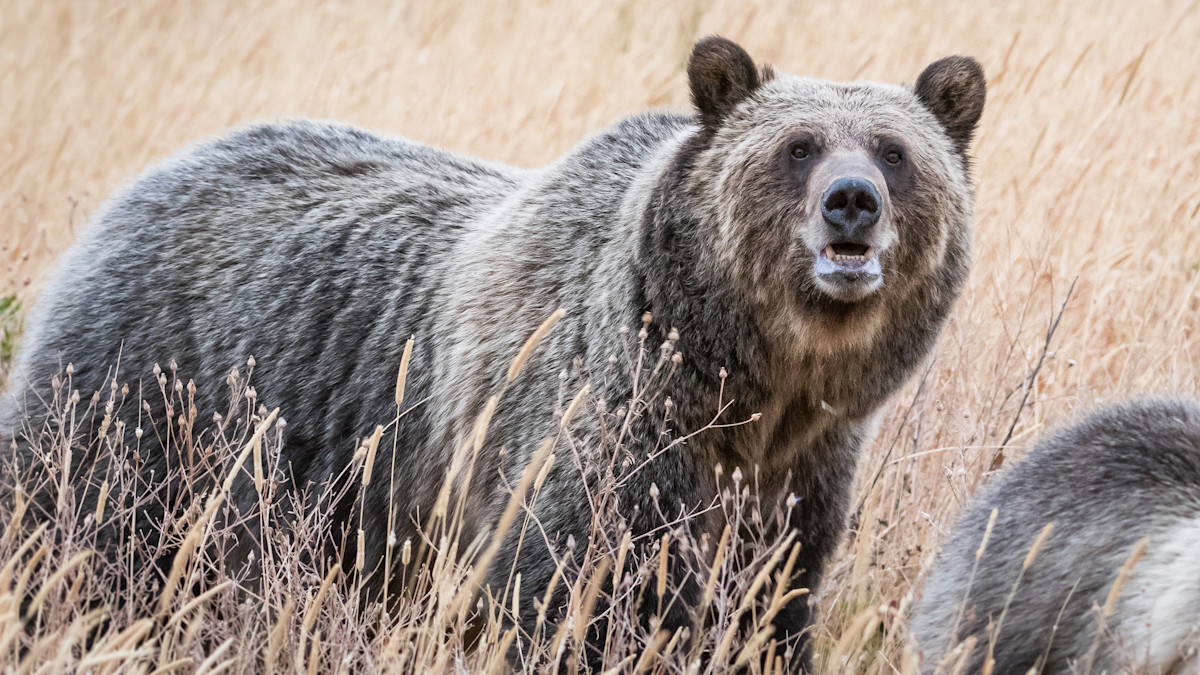
In early October, a landowner in central Montana photographed a grizzly bear near the Judith River—the first time in over a decade that the species has been confirmed on the prairie landscape. The landowner, American Prairie (AP), captured the image on a game camera about two miles upstream from the confluence with the Missouri River.
“Nobody is presently alive in central Montana that remembers when grizzlies were last on the prairie,” AP’s Wildlife Restoration Manager, Daniel Kinka said. Contrary to popular belief, grizzly bears were never endemic to the mountains of Montana. Their native habitat is the central and eastern Montana prairie and western river bottoms. They were only pushed into mountainous terrain by predator culling and development when pioneers settled the West.
In fact, when Lewis and Clark passed through present-day eastern Montana on their journey west, they encountered, killed, and described grizzly bears for the first time near what is now Fort Peck Reservoir: “The legs of this bear are somewhat longer than those of the black, as are it's tallons and tusks incomparably larger and longer.” (April 29, 1805)
That was only the first of numerous encounters to come. Perhaps the most harrowing is worth reading in detail from Lewis’s diary:
In the evening the men in two of the rear canoes discovered a large brown bear lying in the open grounds about 300 paces from the river, and six of them went out to attack him, all good hunters; they took the advantage of a small eminence which concealed them and got within 40 paces of him unperceived, two of them reserved their fires as had been previously conscerted, the four others fired nearly at the same time and put each his bullet through him, two of the balls passed through the bulk of both lobes of his lungs, in an instant this monster ran at them with open mouth, the two who had reserved their fires discharged their pieces at him as he came towards them, boath of them struck him, one only slightly and the other fortunately broke his shoulder, this however only retarded his motion for a moment only, the men unable to reload their guns took to flight, the bear pursued and had very nearly overtaken them before they reached the river; two of the party betook themselves to a canoe and the others seperated an concealed themselves among the willows, reloaded their pieces, each discharged his piece at him as they had an opportunity they struck him several times again but the guns served only to direct the bear to them, in this manner he pursued two of them seperately so close that they were obliged to throw aside their guns and pouches and throw themselves into the river altho' the bank was nearly twenty feet perpendicular; so enraged was this anamal that he plunged into the river only a few feet behind the second man he had compelled take refuge in the water, when one of those who still remained on shore shot him through the head and finally killed him; they then took him on shore and butched him when they found eight balls had passed through him in different directions. (May 14, 1805)
By around the 1920s, however, the bears were entirely extirpated from the prairie and remained so until a few years ago. According to Kinka, there have been bear sightings in the upper Judith Basin for the last two years—enough that biologists estimate at least four bears are living in the region. The photo taken in October is the first piece of conclusive evidence, however, and one that AP has been waiting a long time for.
“Seeing the species recover in meaningful populations has long been our goal,” Kinka said. “But because of the contentiousness surrounding grizzly bears, it’s just not feasible to propose some kind of hard reintroduction. So basically, we’ve been waiting for this for two decades.”
In that time, AP has slowly been buying up ranches and grazing leases in central Montana with the goal of creating a natural prairie ecosystem. Seeing grizzlies (among other predator species) return has been a long-standing goal for the organization.
“Our two missions are to rewild portions of the Great Plains and then also to provide public access to it. We’re going to do everything in our power to mitigate conflicts with this bear and any other grizzlies that happen to show up on our properties,” Kinka said. In short, AP hopes to show that coexisting with grizzlies on the prairie landscape is a feasible proposition.
Furthermore, as a testament to grizzly’s ability to quietly inhabit the landscape, this bear and others made it all the way to the Missouri River from the Rocky Mountain front in western Montana without being detected. “Not only are they not interfering with livestock, they’re not even eating birdseed. There’s no conflict that has been reported—at least nothing that’s received public attention,” Kinka added. “This is a rewilding of one of the most contentious species in North America, and it’s been happening almost completely unnoticed.”
Going forward, AP expects—and hopes—to see more bears on its properties in Montana. “As we redouble our effort toward the hard work of rewilding,” wrote AP in a press release, “There are grizzlies softly shuffling back toward the plains all on their own.”
Feature image via istock.





